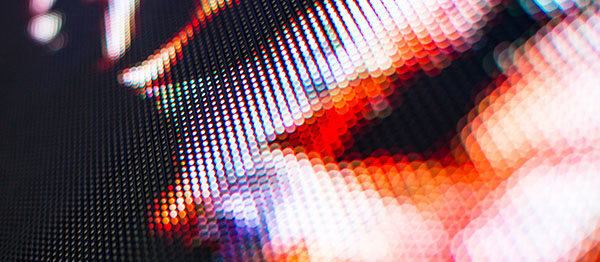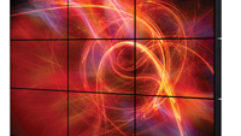
AV Technology is gauging the industry’s perceptions of LED displays. End-users, integrators, and design partners are called upon to take this brief survey to weigh in on the state of LED display technology and the value it provides from installation to day-to-day operation. Click here to take the survey now.

7 Critical Elements of Performance LED Displays
The following elements combine to make up the highest quality and performance LED displays. Are you willing to sacrifice one or more for a lower price? Do you need to?
1: Diode Consistency | Each diode made in a given production run will exhibit tiny variances from the others in its bin, despite the fact that they were all created with the same materials in an MOCVD reactor. Manufacturers sort newly created diodes through a classification process that groups together performance-similar diodes which could drive the display price up or down. The downside of choosing lesser performing diodes results in a lack of display color consistency. The upside of selecting the best performing diodes to meet end display performance requirements also has the benefit of delaying recurring calibration processes leading to longer display lifespans in use.
2: Die Selection | Color consistency is related to the consistency of the diodes. More specifically, it depends on the uniformity in luminance of the dies. The deviation between dies impacts elements of the completed display like color distribution and brightness. The larger the surface area of the die determines the levels of brightness which correlates to the price. The larger the die and with narrower deviation, the more expensive the display. This element also contributes to display longevity.
3: LED Packaging | While recycling might be suitable for cardboard containers, using recycled materials during manufacturing can cause structural fatigue and moisture egress of a display. Look for displays that package certain diodes with non-recycled polyphthalamide (PPA) material on the lead frame.
4: Color Space | The color space of a display determines how close to real life a display can obtain. With meticulous binning processes by the manufacturer, displays can be built with a native color space that is wider and richer than the two traditional industry standards, Rec709 and DCI-P3.
5: Flexibility and Customization | Unique designability creates distinctive features which add value to showcased content. Look for a manufacturer that uses a frame/skin topology such as seamlessly curved display and can provide and customized sizes or shapes to allow for the most flexibility and freeform to fit your design methodology.
6: Mounting | There can be hidden costs related to mounting. These expenses could have to do with excess weight, gaps in the cabinets, or complications stemming from the use of a third-party mount. Unless the design specifically requires it, look for a display that can be mounted directly to structure.
7: Warranty, Support, and Training | Choosing the right manufacturing partner is vital. Most manufactures warranties run out in three or five years. Look for a comprehensive warranty that goes beyond five years with a support staff that is on-hand 24/7. Being able to receive timely upgrades, education, training, and local service and support all play into developing a long-term relationship with the display manufacturer you choose.
Tell Us What You Want Most!
We invite you to take this survey and share your insights and opinions on what is important to you when choosing a videowall display technology. You could win a $500 Amazon Gift Card for just 10 minutes of your time.









